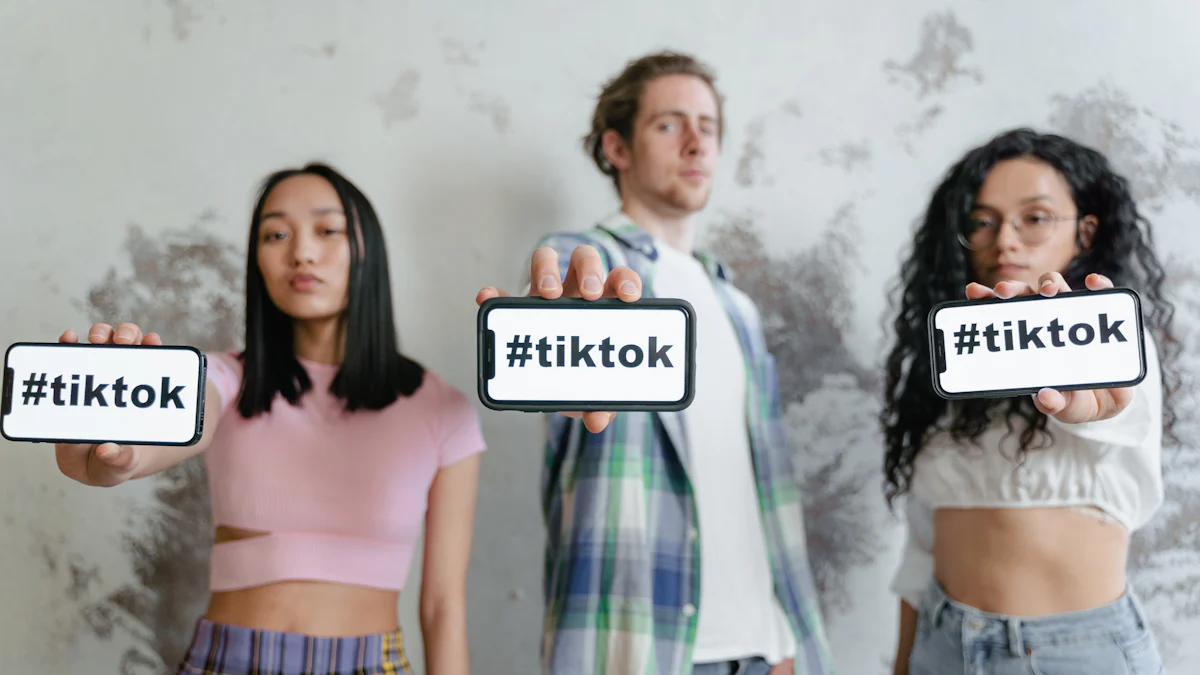Analyzing the Success of Influencer Marketing Campaigns

The rise of influencer marketing has transformed how businesses connect with their audiences. With the industry now worth $21.1 billion in 2023, compared to just $1.7 billion in 2016, its rapid growth highlights its effectiveness as a strategy. Influencer marketing campaigns consistently deliver strong results, with businesses earning an average of $6.50 for every $1 spent. However, achieving such returns requires more than just collaboration with influencers. You must measure success to ensure your campaigns drive meaningful outcomes. By leveraging data, you can evaluate performance, refine strategies, and maximize your return on investment.
Understanding the impact of influencer marketing campaigns also helps you navigate challenges like tracking brand awareness or managing multi-platform efforts. Data-driven insights empower you to make informed decisions, ensuring your campaigns resonate with audiences and deliver long-term value. Whether you’re analyzing engagement rates or exploring an influencer marketing case study, success lies in your ability to measure and optimize every aspect of your strategy.
Why Measuring Success in Influencer Marketing is Critical
The Role of ROI in Influencer Marketing
Why ROI is a key indicator of campaign success
Understanding the return on investment (ROI) of influencer marketing is essential for evaluating the effectiveness of your campaigns. By measuring ROI, you can determine whether your efforts are generating meaningful results. Key metrics such as engagement rate, conversion rate, and return on ad spend (ROAS) provide insights into the visibility and financial impact of your campaigns. For example:
- Engagement rate measures how actively audiences interact with influencer content.
- Conversion rate tracks the percentage of users who take desired actions, such as making a purchase.
- ROAS calculates the revenue generated for every dollar spent on the campaign.
High engagement rates often indicate content that resonates with your audience, leading to increased brand loyalty and conversions. These insights help you assess the impact of influencer campaigns and refine your strategies for better outcomes.
How ROI influences budget allocation and future strategies
ROI plays a critical role in shaping your marketing budget and long-term plans. When you demonstrate strong influencer marketing ROI, you can justify higher budget allocations to stakeholders. Data-backed projections showing potential returns make it easier to secure funding for future campaigns. Additionally, analyzing ROI helps you identify which influencers and platforms deliver the best results, enabling you to focus resources on strategies that drive success.
Challenges in Measuring Influencer Marketing
Tracking indirect outcomes like brand awareness
Measuring influencer marketing success becomes challenging when dealing with intangible goals like brand awareness. While metrics such as reach and impressions provide some insight, they don’t always capture the full impact of influencer campaigns. Surveys and analytics tools can help measure brand lift, but connecting these outcomes to business objectives often requires additional effort.
Managing the complexity of multi-platform campaigns
Multi-platform campaigns add another layer of complexity to measuring influencer marketing. Each platform has unique audience behaviors, content formats, and engagement metrics. For instance, Instagram may prioritize likes and comments, while YouTube focuses on watch time and subscriptions. Aggregating data across platforms can be time-consuming, making it harder to evaluate overall campaign effectiveness.
Benefits of Measuring Influencer Marketing
Improved decision-making for future campaigns
Accurate measurement of influencer marketing campaigns allows you to analyze performance effectively. This analysis helps you identify successful strategies and discontinue ineffective ones. For example, understanding which influencers drive the most conversions enables you to optimize future collaborations.
Justifying marketing spend to stakeholders
When you measure success, you provide concrete data that aligns marketing efforts with business objectives. Demonstrating contributions to key performance indicators (KPIs) like customer acquisition cost and retention rates strengthens your case for budget approvals. Stakeholders are more likely to support increased spending when you present data-backed evidence of potential returns.
Key Metrics and Methods for Measuring Influencer Marketing
Engagement Metrics
Tracking likes, comments, shares, and saves
Engagement metrics are essential for understanding how audiences interact with influencer content. By tracking likes, comments, shares, and saves, you can evaluate the resonance of your campaigns. These interactions reveal how well the content captures attention and encourages participation. Metrics like engagement by reach and engagement by impressions provide deeper insights:
- Engagement by Reach compares interactions to the number of unique viewers, showing how compelling the content is.
- Engagement by Impressions measures interactions against total impressions, offering visibility into content frequency.
- Cost Per Engagement (CPE) calculates the cost-effectiveness of your campaign by dividing total costs by the number of engagements.
- Daily Engagement Rate tracks engagement trends over time, helping you plan future campaigns effectively.
High engagement rates indicate that your influencer marketing campaigns are delivering value. This data helps you refine strategies and allocate resources efficiently.
Measuring audience interaction rates
Audience interaction rates, including likes, comments, and shares, provide a clear picture of content performance. High interaction rates suggest that your content is relevant and valuable to your audience. These metrics also help you measure influencer performance and identify effective collaborations. By analyzing audience behavior, you can create campaigns that foster brand loyalty and drive conversions.
Conversion Metrics
Sales and revenue generated from campaigns
Tracking sales and revenue is crucial for measuring influencer marketing success. You can use tools like affiliate links, promo codes, and UTM parameters to monitor conversions. For example:
- Affiliate links track traffic and sales generated by influencers.
- Promo codes incentivize purchases and provide measurable data on campaign performance.
- UTM parameters help you trace traffic sources and conversions through analytics platforms.
These methods allow you to attribute e-commerce sales directly to influencer efforts. With 64% of consumers making purchases based on influencer recommendations, these tools ensure accurate measurement of campaign impact.
Using affiliate links, promo codes, and UTM parameters
Affiliate links and promo codes are highly effective for tracking conversions. They provide clear data on the influencer's contribution to revenue generation. Promo codes, in particular, are easy to share and track, making them ideal for e-commerce sales. Combining these tools with UTM parameters enhances tracking capabilities, giving you a comprehensive view of your campaign's success.
Brand Awareness and Sentiment
Measuring brand lift through surveys and analytics
Brand awareness is a critical outcome of influencer marketing campaigns. Surveys and analytics tools can help you measure brand lift by assessing changes in consumer perception before and after a campaign. Effective methods include:
- Conducting surveys to gauge brand recognition and recall.
- Using focus groups to gather qualitative feedback.
- Running advertising recall tests to measure how well consumers remember your brand.
Tools like Google Analytics and Emplifi also provide insights into website traffic and audience engagement, helping you connect awareness metrics to business objectives.
Monitoring social media mentions and sentiment analysis
Sentiment analysis evaluates the qualitative impact of influencer campaigns. By monitoring social media mentions, you can gauge audience perception of your brand. Positive sentiment indicates successful campaigns, while negative feedback highlights areas for improvement. This approach ensures your marketing efforts align with audience expectations, fostering stronger relationships and long-term loyalty.
Long-Term Impact Metrics
Customer lifetime value (CLV) from influencer-driven leads
Customer lifetime value (CLV) is a critical metric for evaluating the long-term success of influencer marketing. It measures the total revenue you can expect from a customer throughout their relationship with your brand. A high CLV indicates strong customer loyalty and retention, which are essential for sustainable growth. Influencer-driven leads often result in higher CLV because influencers build trust and credibility with their audiences. This trust translates into loyal customers who are more likely to make repeat purchases.
You can assess the effectiveness of influencer marketing by comparing the CLV of customers acquired through influencers to those from other channels. If influencer-driven leads consistently show higher CLV, it demonstrates the value of these partnerships in fostering long-term customer relationships. For example, influencers who align with your brand values can create authentic connections with their followers, leading to increased customer retention and higher lifetime revenue.
| Metric | Description |
|---|---|
| Customer Lifetime Value | Increases through repeat purchases and loyalty driven by influencer campaigns. |
| Brand Affinity | Builds long-term relationships with the audience through influencer partnerships. |
| Trust and Credibility | Enhances brand trust through consistent positive interactions with influencers. |
Repeat purchases and customer retention rates
Repeat purchases and customer retention rates are essential metrics for measuring influencer marketing's long-term impact. Customers introduced to your brand through influencers often feel a stronger connection due to the influencer's endorsement. This connection encourages them to return for additional purchases, boosting your retention rates.
Tracking repeat purchases helps you understand how well your influencer campaigns drive ongoing engagement. For instance, if customers frequently return to buy your products after an influencer campaign, it signals that the campaign successfully built brand loyalty. Social media platforms also play a role in maintaining this connection. Influencers often share follow-up content, keeping your brand top-of-mind for their audience.
Retention rates provide further insights into the effectiveness of your campaigns. High retention rates indicate that your influencer marketing efforts resonate with customers, leading to long-term relationships. By analyzing this data, you can refine your strategies to focus on influencers and content that drive repeat business.
Pro Tip: Use tools like customer relationship management (CRM) software to track retention rates and repeat purchases. This data helps you identify trends and optimize future campaigns for sustained success.
Influencer Marketing Case Study: Examples of Success

Case Study 1: Daniel Wellington's Instagram Campaign
Overview of the campaign and its goals
Daniel Wellington's Instagram campaign revolutionized how brands approach influencer marketing. The primary goal was to increase brand visibility and drive e-commerce sales by leveraging the power of creators. The campaign focused on showcasing their minimalist watches through visually appealing content that resonated with a global audience. By collaborating with both micro and macro influencers, the brand ensured a balance between authenticity and reach.
Key metrics tracked and outcomes achieved
Daniel Wellington tracked several key metrics to measure the campaign's success. These included engagement rates, reach, and conversion tracking through custom discount codes and affiliate links. The brand also monitored brand sentiment by analyzing comments and social media mentions. This data-driven approach allowed them to refine their strategy in real-time.
The campaign's success stemmed from several strategies:
- Partnering with creators to enhance brand visibility.
- Using high-quality, aesthetic product images to captivate audiences.
- Posting consistently to maintain engagement.
- Actively engaging with followers to build trust.
These efforts resulted in significant growth in e-commerce sales and a stronger connection with their audience.
Case Study 2: Glossier's Micro-Influencer Strategy
Overview of the campaign and its goals
Glossier adopted a unique approach by turning everyday fans into micro-influencers. The goal was to create an authentic and approachable brand image while driving e-commerce growth. By collaborating with niche creators, Glossier amplified its message and built a loyal community.
Key metrics tracked and outcomes achieved
The campaign tracked engagement rates, user-generated content, and audience sentiment. By focusing on creators who resonated with their target audience, Glossier achieved higher engagement and strengthened its community. This strategy not only boosted e-commerce sales but also enhanced brand loyalty.
Lessons Learned from Impactful Influencer Marketing Campaigns
Common strategies that drive success
Successful campaigns share several key strategies:
- Define clear goals and messaging.
- Choose creators who align with your brand values.
- Develop interactive content to engage audiences.
- Track performance metrics to refine strategies.
Avoiding pitfalls through data-driven insights
Data-driven insights help you avoid common pitfalls. Analyze engagement metrics to ensure creators generate meaningful interactions. Evaluate follower authenticity and audience demographics to select the right partners. This approach ensures your campaigns resonate with loyal audiences and deliver measurable results.
Actionable Steps to Optimize Influencer Marketing Strategies

Setting Clear Goals and KPIs
Aligning campaign goals with business objectives
To create an effective influencer marketing strategy, you must align your campaign goals with broader business objectives. Start by defining your brand's core values and identity. This clarity helps you identify influencers who resonate with your mission. Ensure your campaign objectives, such as increasing brand awareness or driving sales, directly support your overall marketing goals.
Tracking relevant metrics in real-time ensures your campaigns stay on track. For example:
- Set clear objectives like boosting website traffic or improving customer retention.
- Use KPIs like conversion rates or engagement levels to measure success.
- Adjust your strategy based on performance data to maximize results.
Defining measurable KPIs for success
Measurable KPIs are essential for tracking progress and ensuring accountability. Use the SMART framework to define your goals:
- Specific: Avoid ambiguity by clearly stating your objectives.
- Measurable: Quantify success with metrics like sales or impressions.
- Achievable: Set realistic targets based on available resources.
- Relevant: Ensure goals align with your business priorities.
- Time-bound: Establish deadlines to maintain focus.
For example, if your goal is to increase e-commerce sales, track metrics like revenue generated through influencer campaigns or the number of new customers acquired.
Selecting the Right Influencers
Evaluating influencer audience demographics and engagement
Choosing the right influencers is critical for authentic brand engagement. Start by understanding your target audience. Research demographics like age, location, and interests to find influencers who appeal to your ideal customers. Evaluate their engagement rates to ensure their followers actively interact with their content.
Consider these steps:
- Identify influencers whose audience aligns with your target market.
- Assess their authority and authenticity by reviewing past collaborations.
- Analyze their content quality and style to ensure compatibility with your brand.
Ensuring alignment with brand values and messaging
Influencers must reflect your brand's values to maintain authenticity. Develop a compelling brand story that communicates your mission and vision. Share this story with potential influencers to ensure alignment.
Evaluate their past content and partnerships to confirm they represent your brand effectively. Look for influencers who consistently produce high-quality content and engage positively with their audience. Open communication is key to setting expectations and fostering a successful collaboration.
Leveraging Data Analytics
Using tools to track campaign performance in real-time
Real-time tracking tools are essential for monitoring influencer marketing performance. Platforms like Sprout Social, Statusphere, and Traackr provide detailed insights into engagement, reach, and campaign progress.
| Tool Name | Key Features |
|---|---|
| Sprout Social | Tracks engagement, monitors sentiment, and measures competitor performance. |
| Statusphere | Automates influencer post tracking and provides engagement rate insights. |
| Traackr | Offers real-time analytics and tracks branded keywords and hashtags. |
These tools help you identify trends and make adjustments to improve campaign outcomes.
Analyzing data to identify trends and areas for improvement
Data analysis allows you to refine your influencer marketing strategy. Evaluate metrics like follower growth, engagement rates, and content performance to identify successful tactics. Use this information to optimize future campaigns.
For example:
- Detect fake followers to ensure authentic collaborations.
- Benchmark your campaigns against competitors to uncover areas for improvement.
- Measure audience loyalty to identify influencers for long-term partnerships.
By leveraging data, you can make informed decisions that enhance campaign effectiveness and drive better results.
Building Long-Term Partnerships
Benefits of ongoing collaborations with influencers
Establishing long-term partnerships with influencers offers significant advantages for your brand. These collaborations create a foundation for consistent and impactful influencer marketing efforts. When you work with influencers over time, you benefit from:
- Higher sales overall, as repeated exposure to influencer content strengthens brand recognition and drives conversions.
- More brand stability, with consistent messaging from trusted influencers reinforcing your brand identity.
- Better creative flow from influencers who understand your brand, leading to innovative and engaging content.
- Increased brand trust, as authentic endorsements resonate with audiences and build credibility.
- Enhanced engagement, with content that aligns with the influencer’s voice fostering deeper connections.
- Improved brand loyalty, as influencers advocating for your brand encourage their followers to remain loyal.
- Deeper collaboration, enabling you and the influencer to develop creative strategies that deliver better results.
These benefits highlight the value of nurturing long-term relationships with influencers. By investing in these partnerships, you ensure your campaigns remain authentic and effective.
Strengthening brand loyalty through consistent messaging
Ongoing collaborations with influencers play a crucial role in building brand loyalty. When influencers consistently promote your brand, they create a sense of authenticity and trust that resonates with their audience. This trust translates into stronger connections with consumers, who are more likely to remain loyal to your brand.
Long-term partnerships also allow influencers to develop a deeper understanding of your brand’s values and messaging. This familiarity ensures their content aligns seamlessly with your goals, creating a cohesive narrative that strengthens your brand identity. Authentic endorsements from influencers improve brand perception, making your audience feel more connected to your products or services.
By maintaining consistent messaging through these collaborations, you foster genuine relationships with your audience. This approach not only enhances loyalty but also ensures your influencer marketing campaigns deliver lasting value.
Pro Tip: Focus on building partnerships with influencers who share your brand’s values. Their authenticity will amplify your message and create a loyal customer base.
Measuring success in influencer marketing campaigns is essential for achieving meaningful results. By tracking key metrics like engagement, conversions, and brand awareness, you can evaluate campaign performance and refine your strategies. Using insights from ROI calculations allows you to adjust tactics, channels, and messaging for future campaigns. Selecting influencers based on relevance and credibility ensures your efforts align with brand goals and maximize influencer marketing ROI.
Continuous improvement through data-driven decision-making strengthens your campaigns over time. Tracking performance helps you identify gaps and optimize strategies. Every dollar spent should contribute to measurable outcomes, ensuring your influencer marketing ROI remains strong. By focusing on these principles, you can create campaigns that deliver lasting value and drive long-term success.
FAQ
What is the most important metric to track in influencer marketing campaigns?
The most important metric depends on your campaign goals. For sales-focused campaigns, track conversions and revenue. For brand awareness, monitor reach and engagement. Always align metrics with your objectives to measure success effectively.
How do you choose the right influencer for your brand?
Evaluate their audience demographics, engagement rates, and content quality. Ensure their values align with your brand. Use tools like Traackr or Sprout Social to analyze their performance and authenticity.
Can small businesses benefit from influencer marketing?
Yes, small businesses can achieve great results by collaborating with micro-influencers. These influencers often have highly engaged audiences and charge lower fees, making them ideal for limited budgets.
How do you measure ROI in influencer marketing?
Calculate ROI by dividing the revenue generated by the campaign cost. Use tools like UTM parameters, affiliate links, and promo codes to track conversions and attribute sales to specific influencers.
What are the common mistakes to avoid in influencer marketing?
Avoid choosing influencers based solely on follower count. Focus on engagement and audience relevance. Don’t neglect tracking metrics or setting clear goals. These mistakes can lead to wasted resources and poor results.
Pro Tip: Regularly review campaign performance to identify and correct mistakes early.
See Also
Grasping The Return On Investment In Influencer Marketing
Key Influencer Marketing Statistics To Enhance Your Strategy
Benefits And Drawbacks Of Measuring Influencer Marketing ROI
Essential 20 Statistics Every Influencer Marketer Should Know
Seven Essential Steps For Crafting A Winning Influencer Strategy
